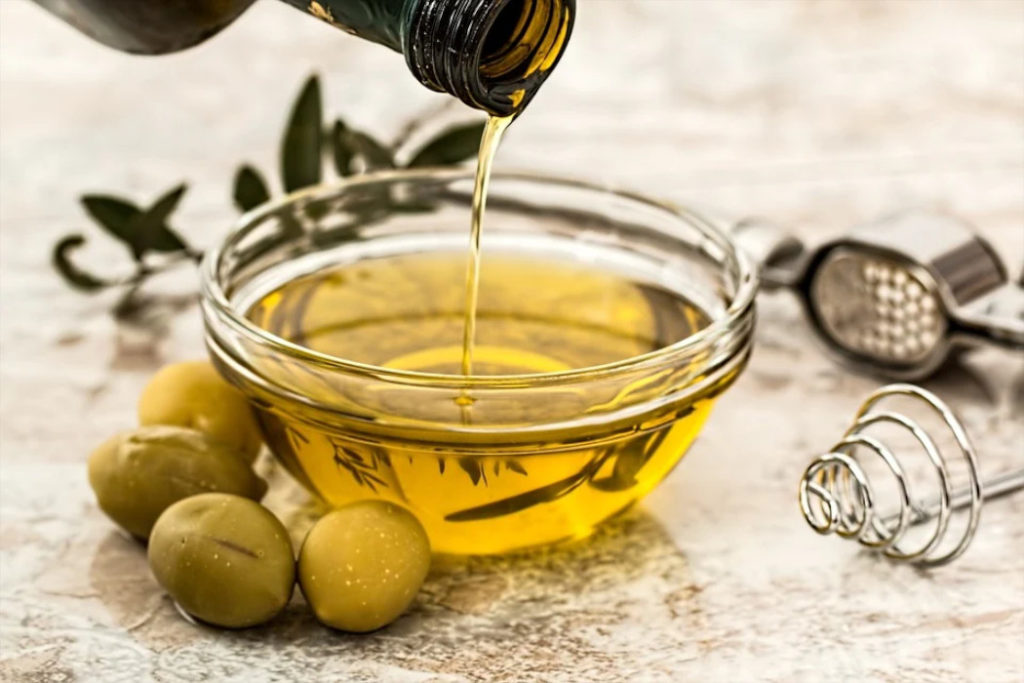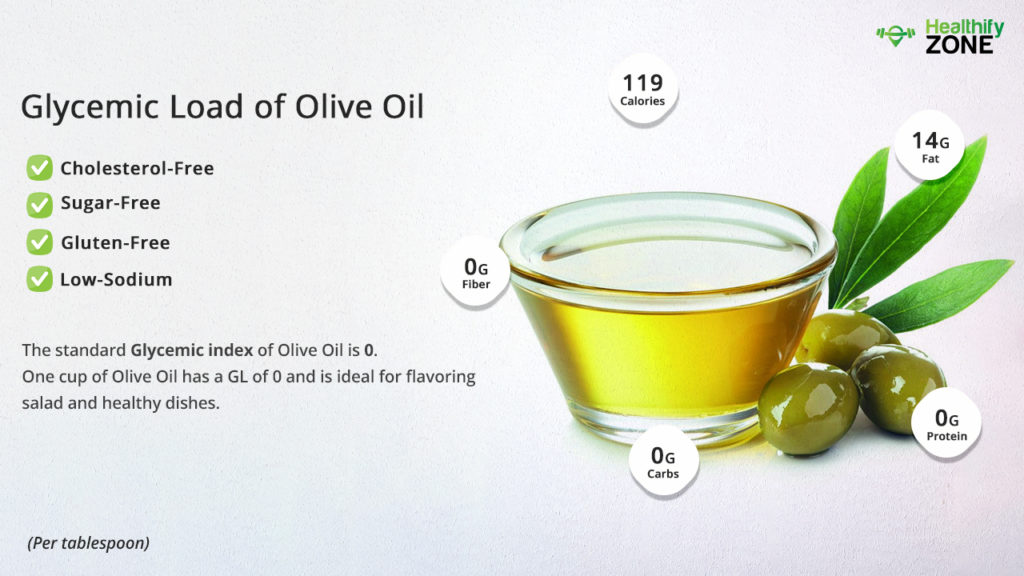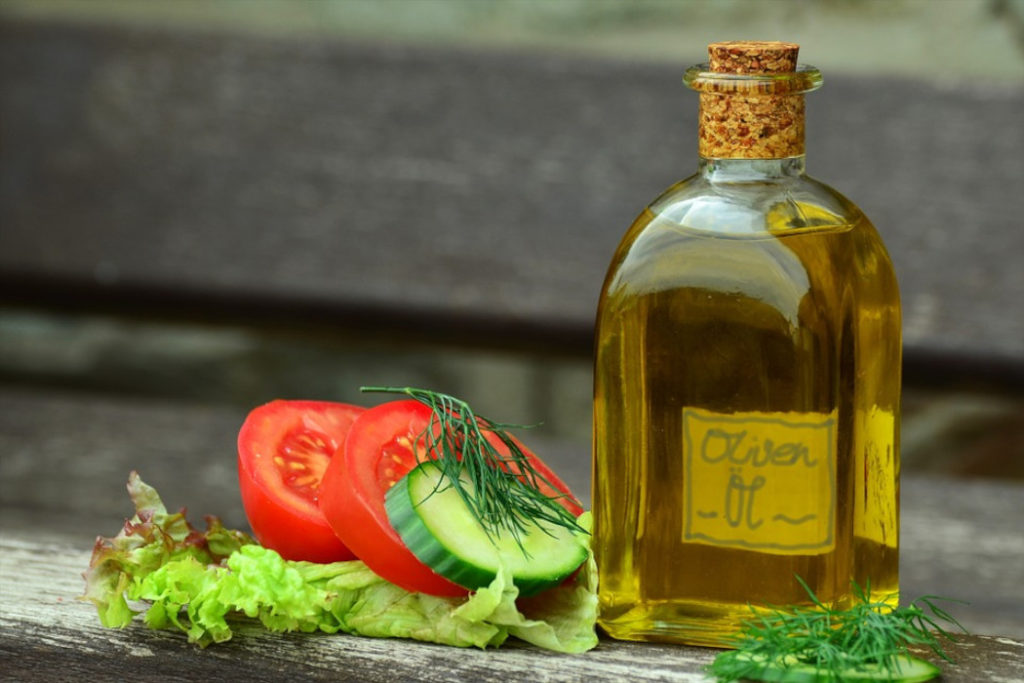The Glycemic Load is a classification of foods that contain carbohydrates and sugar and about how quickly the content can raise blood glucose levels. The Glycemic Index is a way to measure the same, and numbers are assigned to each food item based on how quickly it raises the blood glucose levels. It is an easier way of comparing and finding alternative sources of nutrients. Glucose leads to a higher blood glucose response compared to fructose.
There has generally been a lot of controversy around the health effects of dietary fat. However, experts have said that olive oil, especially extra virgin olive oil, is good for everyone. The International GI Tables have stated that olive oil has a GI of zero because of the lack of carbs in it. Olive oil is essentially a natural extract from olives. It is rich in monosaturated oleic acid, which has several beneficial effects and is a healthy choice for cooking.

Olive Oil comes from trees, and it comprises healthy nutrients like
- Vitamin E
- Vitamin K
- Saturated Fat
- Monosaturated Fat
- Polyunsaturated Fat
- Omega 3 Fatty Acid
- Omega 6 Fatty Acid
- Calcium
- Iron
- Potassium
- Sodium
How to Calculate Glycemic Load of Olive Oil?
The standard Glycemic index of olive oil is NA. The high glycemic index of the fruit helps in reducing the risks related to cardiovascular diseases. If we want to talk about diet, the key to prevent diabetes or any chronic illness is to distribute the carbohydrate consumption content throughout the day and manage the sugar levels in the body correctly— Olive oil has 0 g of carbohydrates in 100 ml of quantity and thus has a glycemic load of zero. Thus, it can be used in small proportions on salads and for stir-frying.
The Formula/Procedure For Calculation of Glycemic Index of the Olive Oil :
GL = GI * carbs / 100
where
- GL – glycemic load;
- GI – glycemic index;
- and carbs – the amount of carbohydrates in the portion.

| SL.NO | WATERMELON BY WEIGHT IN (ml) | GLYCEMIC LOAD |
| 1. | 100 ml of Olive Oil | |
| 2. | 250 ml of Olive Oil | |
| 3. | 500 ml of Olive Oil | |
| 4. | 1 ltr of Olive Oil | |
| 5. | 1 Cup of Olive Oil | |
Is Olive Oil Safe to Consume If You Have Diabetes?
Olive Oil has been known to be highly protective against type-2 diabetes. Studies have shown that olive oil has a beneficial effect on blood sugar and insulin sensitivity. A clinical trial with more than 400 people has been shown to have proven the protective effect of olive oil. Another study has shown that a Mediterranean diet rich in olive oil has reduced the risk of diabetes by over 40%. Given that olive oil has a GL of 0, it does not cause a spike in your blood sugar levels and is a great choice if you are diabetic.
Can I Eat Olive Oil During a Fat-Loss Diet?
You can eat olive oil during a strict fat-loss diet. If you are looking for good results, you should avoid putting a lot.

- Olive Oil as a little salad dressing or to cook something is premissible in a fat-loss diet.
- Olive oil is the healthiest fat.
Can I Eat Olive Oil During a Low-Carbohydrate Diet?
You can use olive oil and consume dishes that have olive oil during a low-carbohydrate diet. Not only does it not have any carbs, but also it has several health benefits.
Is Olive Oil High in Sugar?
Olive oil has no sugar and no carbs. It is an excellent choice for low-carb and low-fat diets. It is incredibly healthy, rich in antioxidants and nutrition, and is the healthiest fat. You must include it in your diet.